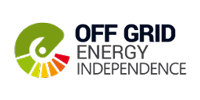
Energy storage joint venture Fluence is acquiring a microgrid software and digital intelligence platform.
The acquisition of Advanced Microgrid Solutions’ artificial intelligence-driven software and digital platform for renewables and energy storage will extend the company’s product line, Fluence said in a release.
“Our century-old power system is stressed. Renewable energy and energy storage are the solution,” said Brett Galura, chief technology officer at Fluence. “AMS has developed one of the most powerful AI-enabled software engines available in the industry. This acquisition provides customers with data-driven insights that maximize the value and performance of generation and storage assets to make the entire grid smarter. These innovations will drive the transformation of global electric power systems to ensure a more sustainable future.”
The acquisition follows a two-year partnership between Fluence and AMS. Fluence itself was created as an energy storage joint venture between AES and Siemens several years ago.
By joining the Fluence team, AMS will leverage Fluence’s global sales reach to make its software available to more customers around the world.
“We are incredibly excited to join the team at Fluence. Customers are building larger fleets of energy storage and flexible generation assets, while at the same time wholesale markets are becoming more complex and volatile,” said Seyed Madaeni, chief executive officer at AMS. “We have a unique opportunity to lead the clean energy revolution by using AI to optimize the dispatch of flexible assets, maximize their value and make the entire electric power system more responsive, reliable and resilient. As part of the Fluence team, we will have the capabilities and resources to accelerate the global expansion of our software.”
read more






Recent Comments